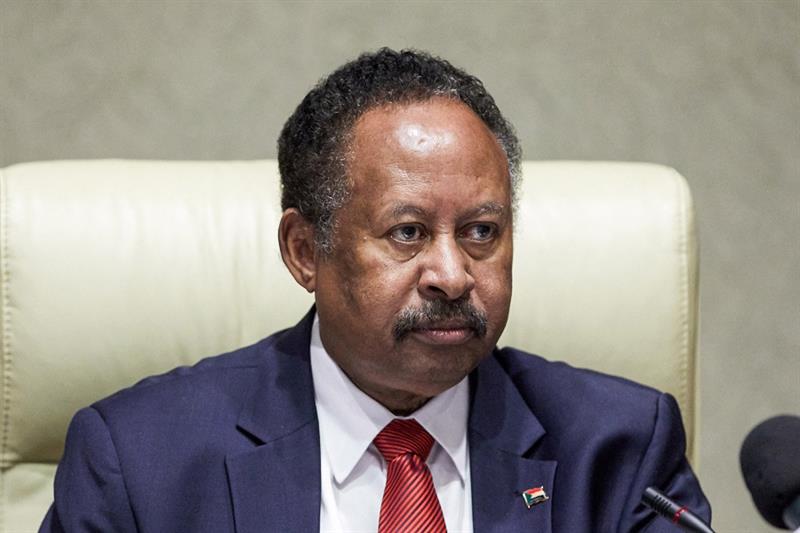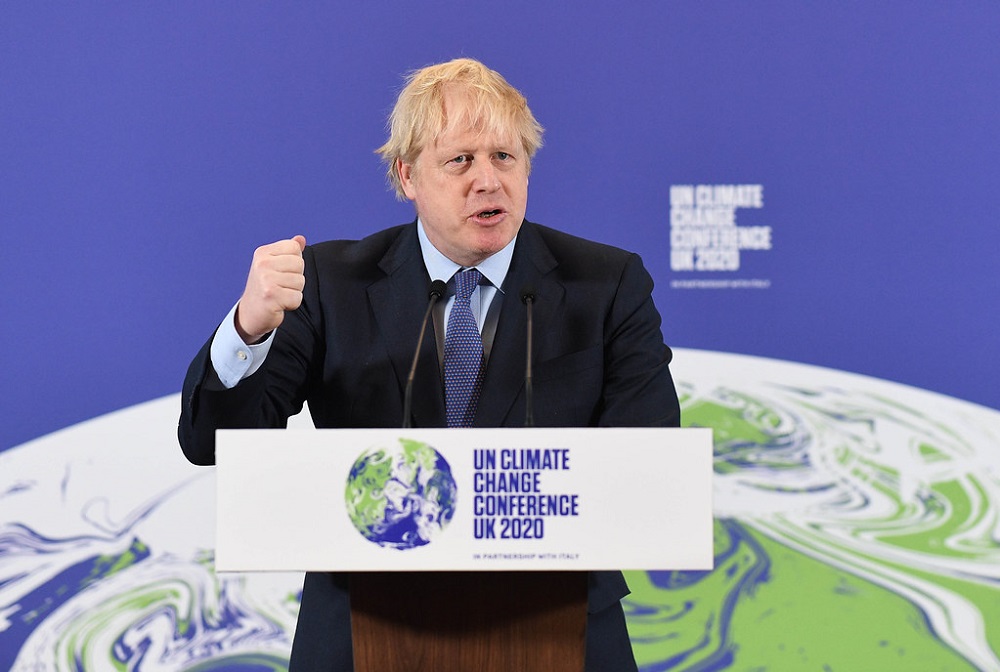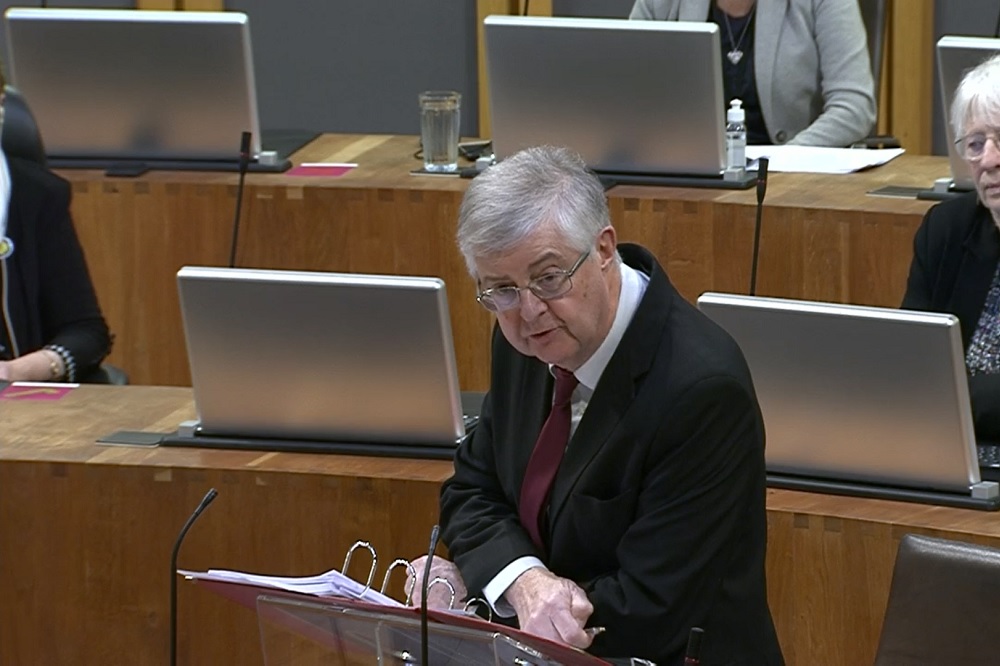Peter Weber, Senior editor
Fri, November 19, 2021,

Huanan seafood market in Wuhan Noel Celis/AFP/Getty Images
Michael Worobey, an evolutionary biologist who signed a high-profile letter in May urging further study of the theory that the COVID-19 coronavirus accidently leaked from the Wuhan Institute of Virology, reported in the journal Science on Thursday that new research strongly suggests the new virus spread to humans from animals at the Huanan Seafood Market, several miles from the lab. His reconstruction of the early days of the pandemic adds to mounting evidence that the coronavirus originated in bats and infected humans through an intermediary mammal, The Wall Street Journal reports.
Worobey, a leading expert in tracking the evolution of viruses, pored through all available records and found that 10 of 19 early COVID-19 patients worked at or had visited the Huanan market, around the area where raccoon dogs were slaughtered. His research determined that a World Health Organization report incorrectly identified a 41-year-old accountant who had not been near the market as the earliest known case. Instead, the first confirmed patients was a female seafood vendor who became symptomatic on Dec. 11.
"In this city of 11 million people, half of the early cases are linked to a place that's the size of a soccer field," Worobey said. "It becomes very difficult to explain that pattern if the outbreak didn't start at the market." He reiterated to The Washington Post that "it becomes almost impossible to explain that pattern if that epidemic didn't start there."
Chinese officials have said the Huanan market wasn't the source of the pandemic. "The market was quickly closed, the animals culled before any were screened for SARS-CoV-2, and everything cleaned and sanitized soon after the outbreak began," the Post reports. "Still, a subsequent investigation showed that traces of the virus were found on surfaces in the market, including drains, particularly in the area where vendors sold animals."
Worobey's reconstruction of the pandemic's origin doesn't conclusively prove nature over lab leak, and some virologists said that given China's reticence to share information, that debate may never be settled. "He has done an excellent job of reconstructing what he can from the available data, and it's as reasonable a hypothesis as any," Columbia University virologist W. Ian Lipkin told The New York Times. "But I don't think we're ever going to know what's going on, because it's two years ago and it's still murky."

ALY SONG / REUTERS
By Samanth Subramanian
Looking into the Future of Capitalism
Published November 19, 2021
When and where the covid-19 pandemic began seems to hinge on when a 41-year-old accountant got sick.
The World Health Organization (WHO) thought it was Dec. 8, 2019, making him the first-known covid-19 patient, according to the WHO’s March 2021 report into the origins of the pandemic. Since the accountant hadn’t visited the Huanan seafood market in Wuhan—where the coronavirus was presumed to have first spread—theories of covid-19’s origins underwent a revision. And since the accountant lived closer to the Wuhan Institute of Virology, the WHO report fed the “lab leak” theory: that the coronavirus had slipped into the world from a lab at the Institute.
Among the scientists who believed that the lab leak theory ought to be investigated was Michael Worobey, a virologist at the University of Arizona. On Nov. 18, however, Worobey took a different stance. Having studied the patterns of early cases as well as medical records, Worobey concluded that the accountant first showed symptoms not on Dec. 8 but on Dec. 16, 2019. As a result, Worobey argued in a paper published in Science, the most likely “patient zero” was a woman who sold seafood at the Huanan market, whose symptoms appeared on Dec. 11.
On Twitter, Worobey warned that his article didn’t cover every possible detail. But by bringing the Wuhan market back into the reckoning, Worobey’s paper offers ideas for scientists looking to figure out how the virus jumped the species barrier into human beings. And it offers a counter to those who still believe that the virus was loosed into the world from a Chinese lab.
Who was covid-19’s patient zero?
To determine the date of the accountant’s illness, Worobey relied in part on a video report from The Paper, a Shanghai-based publication funded in part by the Chinese government. In the video, shot in March 2020, the accountant said his covid-19 symptoms began on Dec. 16, 2019. He had been ill on Dec. 8 as well, he said, but that trip to the hospital had to do with a visit to the dentist, to treat “baby teeth retained into adulthood,” Worobey wrote. Closer to his covid-19 infection, the accountant added, he had traveled closer to the Huanan market; by then, several cases had emerged at the market already.
The WHO report doesn’t seem to take this timeline into account; it regards the date of the accountant’s sickness as Dec. 8, 2019. Speaking to the New York Times, Peter Daszak, a member of the WHO team, said the report’s conclusion about that date was a mistake.
Focusing again on the Huanan market
If the accountant is ruled out, the second confirmed case identified by the WHO becomes the first: the seafood vendor in the Huanan market. That fits the preponderance of cases that emerged in and around the market, Worobey argues. It wasn’t “just” a super-spreading site, he said; there were other places in Wuhan, such as restaurants or hospitals or shopping malls, that would have been more likely super-spreading sites. Instead, the market was the likely origin of the disease’s spread itself, Worobey believes.
Worobey’s paper isn’t, by any means, the final word. David Relman, a Stanford microbiologist, told the Washington Post that Worobey had based his paper “on fragmentary information and to a large degree hearsay.” Worobey responded on Twitter, saying that scientists should refrain from “dismissing the voices of the frontline workers and COVID patients in Wuhan as dishonest or hopelessly unreliable in recounting their own experiences.”
Michael Hiltzik
Fri, November 19, 2021

Medical staff help a patient walk into the hospital in Wuhan, China, in January 2020 as the pandemic was beginning. (Barcroft Media via Getty Images)
A new peer-reviewed research paper points to the likelihood that the COVID-19 pandemic originated at a seafood and wildlife market in Wuhan, China, rather than from a Chinese laboratory studying bat viruses.
The paper, by University of Arizona evolutionary biologist Michael Worobey, supports the consensus among virology experts that the pandemic's origin was natural — that the SARS-CoV-2 virus causing COVID-19 spread via contacts between humans and animals, first from bats, then to intermediate mammalian species, and then to humans. Worobey's report was published Thursday in the journal Science.
Worobey's finding that the earliest identified COVID-19 cases centered around the Huanan Market in central Wuhan, the teeming metropolis where the outbreak apparently originated, "takes the lab-leak idea almost completely off the table," he told me.
I would be very happy to have rejected the natural origin idea with this deep dive that I've done. But that's just not how it worked out
Michael Worobey, University of Arizona
Worobey notes that more than half of the earliest identified COVID-19 cases were centered around the market.
The patients either worked at the market or had friends or other contacts who did, some of whom has visited their homes. Others lived in the "direct vicinity" of the market and may have been connected by only one or two transmissions of the highly infectious virus to someone with direct contact with the market.
"So many of the early cases were tied to this one Home Depot-sized building in a city of 11 million people, when there are thousands of other places where it would be more likely for early cases to be linked to if the virus had not started there," he says.
For even early cases not directly linked to the market to arise among patients with home addresses clustered around the market "is an absolutely crucial point," he says. "There's no way you should expect a bunch of people with the earliest cases of the virus to live around the market unless it started at the market."
Worobey's paper takes aim at one of the central contentions of lab-leak proponents — that Chinese investigators tied the earliest COVID cases to the Huanan Market deliberately to steer attention away from government laboratories in Wuhan, specifically the Wuhan Institute of Virology. The institute was known to have been studying bat viruses purportedly similar to SARS-CoV-2.
The paper undermines a competing theory that the SARS-CoV-2 virus leaked from the Wuhan institute or another lab studying bat viruses, whether inadvertently or as the result of secret bioweapon research. No evidence of research at those labs on viruses that could be precursors to SARS-CoV-2 has ever emerged.
The lab-leak theory originated in 2020 among ideologues in the State Department under then-President Trump. For them, blaming a pandemic on the Chinese government served the dual purposes of scoring points against a geopolitical adversary and distracting attention from the Trump administration’s incompetent response to the pandemic.
Worobey performed what he calls a "deep dive" into the chronology and pattern by which the earliest patients were identified at local and regional hospitals.
He found that doctors were finding patients with what turned out to be telltale signs of COVID-19, such as distinctive X-ray images of infected lungs and patients' failure to respond to customary antiviral treatments, well before anyone identified the market as an epicenter of the infection.

(Reprinted with permission from the American Assn. for the Advancement of Science)
That ruled out any chance that investigators had "cherry picked" the early cases to place blame on the market and divert it from government labs.
"The experiences of these hospitals as they went from not understanding anything about these new cases to its dawning on people at different places and different times that it's spreading," Worobey says, "that rules out ascertainment bias. The link to the market is real, not a mirage."
Worobey concludes that the earliest known COVID-19 case was that of a female seafood vendor at the market, who fell ill on Dec. 11, 2019, and who told investigators that she knew of several other people who fell ill with the same symptoms around the same time.
That conflicts with the long-held identification of the first case as that of a 41-year-old male accountant who had been reported as falling ill on Dec. 8, despite living some 20 miles from the seafood market and having no connection to it.
Worobey unearthed reports, confirmed by hospital records, that the accountant's initial disease was related to a dental problem, not the virus. He did not fall ill with COVID-19 until Dec. 16, possibly during a hospital visit for his dental treatment or during a subway commute, and was hospitalized on Dec. 22.
Worobey's paper adds to the growing body of research pointing to a natural, or "zoonotic" origin of the pandemic. That conclusion is regarded as overwhelmingly likely by virologists, especially since it matches the path by which viral pandemics have typically started throughout history.
Worobey was an instigator an co-author of a May 14, 2021, open letter published in Science and signed by himself and 17 other scientists urging a "dispassionate, science-based" inquiry into the two hypotheses.
He says he was concerned that the potential that the virus escaped from a lab had been dismissed "prematurely," though "even at that time, I thought a natural origin was more likely, though I thought the lab-leak scenario was much more of a contender than I think now."
Multiple research findings since the letter's publication have dealt "body blows" to the lab-leak idea, he told me. Those include a published paper documenting that wildlife susceptible to the virus were being sold illegally at the Huanan Market, which Chinese authorities initially denied.
Other research has established that viruses collected from bats at a copper mine in Mojiang, on the Laotian border about 800 miles from Wuhan, and studied at the Wuhan institute are not nearly as genetically similar to SARS-CoV-2 as initially reported. That means they could not have been progenitors of the pandemic virus.
"I've been very much open to the lab-leak idea," Worobey says. "I would be very happy to have rejected the natural origin idea with this deep dive that I've done. But that's just not how it worked out."
Proponents of the lab-leak hypothesis argue that no empirical evidence exists for a natural spillover, as no animals of potentially intermediate species have yet been found to carry antibodies for the virus.
That's misleading, however. Scientists have found evidence pointing to an evolutionary pathway leading to SARS-CoV-2 from closely related viruses found in Laos and Cambodia, about 1,000 miles from Wuhan.
"The common wisdom is that we don't know very much about the emergence of SARS-CoV-2," virologist Robert Garry of Tulane University told a colloquium sponsored by the Global Virus Network earlier this week. He observed that nine coronaviruses that share structural features with SARS-CoV-2 have been known to infect humans, including the original SARS virus that spread globally and killed more than 700 people in 2002-2004, and the MERS virus that spread primarily in the Middle East in 2012.
"Compared to these other viruses, we actually know more about the emergence SARS-CoV-2," he said. "We know more about how it got into the human population, we know the proximal ancestor, we know there's a bat, we know the particular kind of bat, we have a virus that's extremely close to SARS-CoV-2 [a virus isolated from bats in Laos], and we know the place that the virus spilled over" from animals to people.
"We've made actually some great strides with determining the origin of SARS-CoV-2," Garry said. "You have to believe in quite a few impossible things to believe that the virus leaked from a lab at the Wuhan Institute of Virology."
This story originally appeared in Los Angeles Times.








